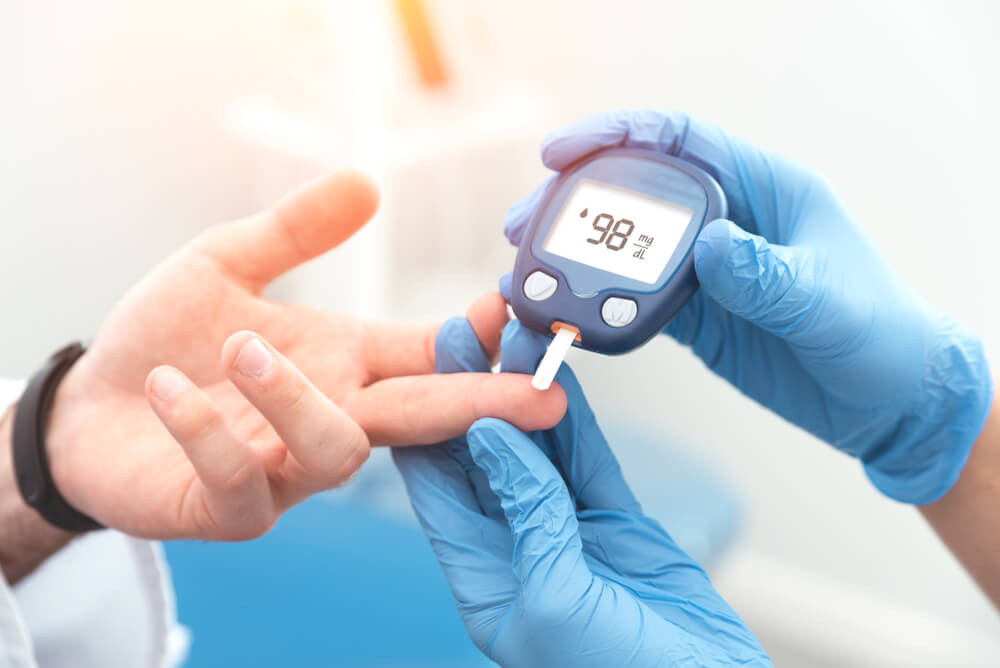What is Diabetes?
Diabetes is a condition in which your body is unable to regulate sugar properly. This happens if the body either can’t make insulin very well or doesn’t make it at all. Insulin is the hormone that regulates how much sugar (glucose) is released into your bloodstream. Elevated blood sugar levels can cause a myriad of problems throughout your body.
Around 9.4 percent of Americans (more than 30 million people) are affected by diabetes. One of the worst features of this disease is that so many people suffer from it without being aware of the fact. Close to 25 percent of the 30 million people mentioned above don’t know they have diabetes. Apart from that a further 84 million Americans have elevated blood glucose levels – a condition known as prediabetes – and 90 percent of them are unaware of this fact. No wonder the American Diabetes Association decided to establish a diabetes alert day to make sure people are better informed.
If at this stage your first question is probably: “Can you live a long life with diabetes?”, the answer is fortunately yes, provided you get the right treatment and make the necessary lifestyle changes.
Different Types of Diabetes
There are different types of diabetes but the two most common types are:
- Type 1 diabetes which is an autoimmune conidition that leads to the destruction of the insulin producing beta cells of the pancreas. After these beta cells are destroyed, the body is unable to produce insulin. Up to 10 percent of individuals who have diabetes suffer from type 1. It is treated with insulin, pump or daily insulin shots, physical activity, and healthy eating.
- Type 2 diabetes is when your body does make insulin but is unable to use it properly. This is the most common form of diabetes. It often runs in families (please also read How To Avoid Diabetes If It Runs In Your Family below) and is also linked to being overweight. Initially, it might be possible to treat it with weight control, exercise, and a healthier diet but later insulin or pills may be needed.

Why Is Diabetes So Dangerous?
Diabetes can affect organs such as your kidneys, eyes, nerves, blood vessels, and heart. It is associated with the following conditions:
- Diseases of the heart and blood vessels, including strokes, heart disease, and high blood pressure
- Neuropathy (nerve damage) that could lead to loss of feeling in your toes or fingers, heart arrhythmia, nausea, vomiting, constipation, or diarrhea
- Chronic kidney disease that might eventually require a kidney transplant or dialysis
- Skin conditions such as fungal and bacterial infections
- Eye damage, including glaucoma and cataracts, as well as damage to the blood vessels of the retina
- Hearing problems are more common among people suffering from diabetes
- Obstructive sleep apnea
- Dementia and more rapid decline in memory function and thinking abilities
- Slower healing of minor cuts and blisters. This sometimes leads to infections that can, in turn, lead to foot, toe, or leg amputations
We are sure at this stage you are asking yourself: Can you live a long life with diabetes? Luckily the answer is yes. As long as you make the necessary lifestyle adjustments and get proper treatment.
Who Is At High Risk Of Diabetes?
The following factors could increase someone’s risk of getting diabetes, particularly type 2:
- Family history. If one or more of your parents or a brother or sister has type 2 diabetes, your risk is higher than average. Please read the section below titled How To Avoid Diabetes If It Runs In Your Family
- Obesity or overweight
- Inactivity. Being physically active keeps your weight in check, makes the cells more sensitive to insulin, and burns glucose as energy
- Storing fat mostly in the abdomen instead of the thighs and hips increases your risk of getting diabetes. A waist size of more than 40 inches (men) or 35 inches (women) are risk factors
- Ethnicity and race play a role. Native Americans, Hispanics, Pacific Islanders, and Asians are more likely to get type 2 diabetes
- People older than 45 have a higher risk to get type 2 diabetes
- Low levels of HDL cholesterol (the ‘good’ one) and elevated levels of triglycerides are associated with a higher risk of type 2 diabetes
- Regions of darker skin, typically in the neck and armpits also known as acanthosis, are linked to insulin resistance
- Suffering from polycystic ovary syndrome increases your risk of diabetes
- If you have given birth to a baby who weighed over 9 pounds or got gestational diabetes during pregnancy, you are at higher risk of developing type 2 diabetes
- Prediabetes, if left untreated, will often progress to full-blown type 2 diabetes
Risk Test For Diabetes
As you will realize after reading the first part of this article, you might have diabetes without being aware of it. And you will only be one of the millions of Americans who are in the same position. The sooner you know whether or not you are at risk of getting diabetes, or maybe already has it, the sooner you can take the first step toward managing the situation.
The American Diabetes Association has developed a risk test for diabetes that you can access from this page. Please also read the section below on How To Avoid Diabetes If It Runs In Your Family.
How To Fight Prediabetes
Apart from the healthy lifestyle choice mentioned above, people who have prediabetes might also ask their doctor to prescribe an oral diabetes medication such as metformin. This could reduce the chances of getting type 2 diabetes. This medication is typically prescribed for people who are overweight and unable to make the necessary lifestyle changes recommended above. In their case they have to learn how to fight prediabetes in a different way.
How To Avoid Diabetes If It Runs In Your Family
If you want to avoid type 2 diabetes, even if one or more of your biological relatives are suffering from the disease, you will have to make a couple of healthy lifestyle choices. The same is true if you are suffering from prediabetes. These choices include:
- Risk test for diabetes. Start by doing the risk test for diabetes on this page.
- Losing excess weight . Getting rid of even a modest amount of excess weight and keeping it off can slow down the progression from prediabetes to full-blown type 2 diabetes. For people suffering from prediabetes, losing between 7 percent and 10 percent of their body weight could significantly reduce the risk of developing type 2 diabetes.
- Adopting healthier eating habits . Choose foods that are higher in fiber and lower in calories and fat. Concentrate on vegetables, fruits, and whole grains.
- Avoiding long periods of inactivity . Sitting in one position for hours can increase the risk of developing type 2 diabetes. Make a point of getting up and moving around every 30 minutes.
- Getting More exercise . Try to get at least 2 to 3 hours of moderate to vigorous exercise every week. Examples include cycling, walking, swimming, or jogging.
- Learn how to fight prediabetes . Read the section titled Learn How to Fight Prediabetes below to learn about lifestyle changes and treatments that can help prevent prediabetes from developing into full-blown type 2 diabetes.
Can You Live A Long Life With Diabetes?
It’s not all bad news though. Although diabetes is not curable, it can be well managed with medication, exercise, and diet. So the answer to the question “Can you live a long life with Diabetes?” is yes. Many people live long, active lives while suffering from this disease.

Diabetes Alert Day
The American Diabetes Association Diabetes Alert Day is observed on the fourth Tuesday in March every year. In 2021 it will, therefore, be on March 23. The diabetes alert day is a single-day warning to make the public more aware of exactly how serious diabetes is and how important it is to fully understand your possibility. We would like to use this opportunity to encourage readers to make sure you – or somebody you love – aren’t perhaps at risk of developing type 2 diabetes aside by taking the risk test for diabetes mentioned earlier in this article.
Ten Warning Signs That You Might Have Diabetes
At this stage you might wonder if there are warning signs that you might be suffering from diabetes. Unfortunately not everybody who has diabetes has warning signs. This is exactly why it is often referred to as the ‘silent disease’. But if you have any of the following symptoms you should have yourself tested for diabetes as soon as possible:
- Being exceptionally thirsty most of the time
- Urinating more than you used to, particularly at night
- Feeling unusually tired
- Feeling unusually hungry most of the time
- Suffering from unexplained weight loss
- Cuts and sores take much longer than normal to heal
- Your skin has become unusually dry and itchy
- Experiencing a tingling feeling in your feet or fingers or starting to lose feeling
- Suffering from blurry eyesight
The Bottom Line
If you’ve read this far, you are clearly eager to learn more about the topic of diabetes. We hope this article has answered most of your questions, but please feel free to leave a comment below if there’s something else you want to know more about. You are also welcome to visit our website to learn more about who we are and the services we offer related to testing for diabetes and treating the disease.


